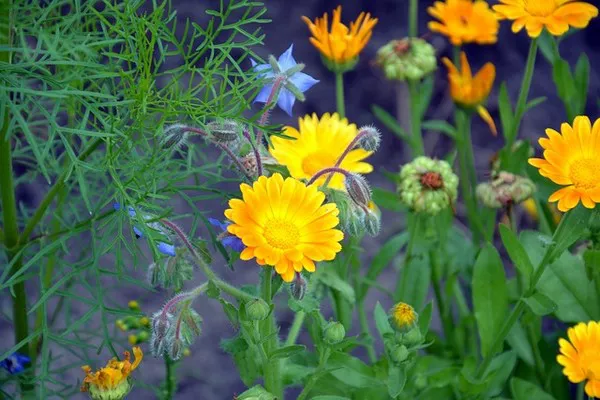Birth flowers hold a special place in cultural traditions around the world, symbolizing not only the month of an individual’s birth but also carrying unique meanings and sentiments. For those born in October, the birth flower is the marigold. This vibrant and cheerful bloom has a rich history, diverse symbolism, and a range of cultural significance that makes it a truly remarkable choice to represent the month of October.
The History of Marigolds: From Ancient Times to Modern Gardens
Marigolds, scientifically known as Calendula officinalis, have a history that stretches back thousands of years. These blossoms have been revered by various ancient civilizations for their medicinal, culinary, and ornamental uses. The name “marigold” is thought to be derived from “Mary’s gold,” referring to the Virgin Mary, as marigolds were often associated with the Virgin Mother in Christian traditions.
Throughout history, marigolds have been used for their healing properties, finding applications in traditional medicine for their anti-inflammatory, antiseptic, and wound-healing capabilities. They were also used as culinary ingredients and natural dyes, adding color and flavor to dishes and textiles.
In modern times, marigolds have maintained their popularity, gracing gardens, landscapes, and events with their vibrant hues. Their ability to thrive in various climates and their striking appearance have made them a favorite among gardeners and floral enthusiasts alike.
Symbolism and Meaning: A Tapestry of Significance
The marigold is rich in symbolism, embodying a spectrum of meanings across different cultures and contexts. Some of the most prominent symbolic associations of marigolds include:
Joy and Optimism: With their radiant shades of orange, yellow, and gold, marigolds are often linked to happiness, warmth, and positivity. Their vibrant colors have the power to uplift spirits and bring a sense of joy to any setting.
Friendship and Compassion: Marigolds are often regarded as symbols of friendship and empathy. Gifting someone marigolds can express genuine care and concern, making them a popular choice for expressing emotions beyond words.
Grief and Remembrance: In some cultures, marigolds are also associated with remembrance and honoring the departed. They are used in ceremonies and rituals to pay homage to loved ones who have passed away.
Protection and Luck: Marigolds have been believed to possess protective qualities, warding off negative energies and bringing good luck. In some cultures, marigolds are planted around homes to provide a shield against negative influences.
Creativity and Inspiration: The vibrant and fiery hues of marigolds have been linked to creativity and inspiration. They are often used in artistic and creative spaces to stimulate imagination and motivation.
Cultural Significance: Marigolds Around the World
The marigold’s significance is not confined to a single culture or tradition; rather, it spans across different societies, each adding its own unique layer of meaning. Here are a few examples of how marigolds are embraced around the world:
Mexico’s Day of the Dead: In Mexico, marigolds play a central role in the celebration of Dia de los Muertos, or the Day of the Dead. The vibrant orange and yellow marigolds are used to create elaborate altars and adornments, symbolizing a connection between the living and the deceased.
Indian Festivals: Marigolds are highly regarded in Indian culture and are often used in religious ceremonies, festivals, and weddings. They hold auspicious connotations and are considered a symbol of wealth, prosperity, and spiritual purity.
Thai Traditions: In Thailand, marigolds are associated with Mother’s Day and are often given as tokens of love and respect to mothers and maternal figures. They are also used in religious rituals and offerings.
Medieval European Traditions: In medieval Europe, marigolds were used for culinary and medicinal purposes. They were also used to dye fabrics and create vibrant pigments for manuscripts.
Embracing Marigolds in Modern Times
As October’s birth flower, marigolds continue to enchant and inspire people worldwide. Their captivating beauty, diverse symbolism, and cultural significance make them a meaningful choice for birthdays, celebrations, and even moments of reflection. Whether planted in gardens, used in floral arrangements, or incorporated into cultural traditions, marigolds stand as a living testament to the enduring connections between nature, culture, and the human experience. Embracing the marigold as October’s birth flower invites us to explore the rich tapestry of meanings woven into this blossoming treasure.


